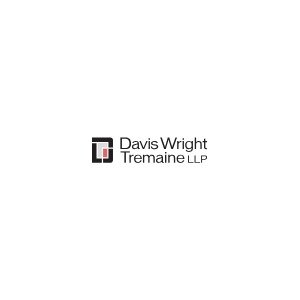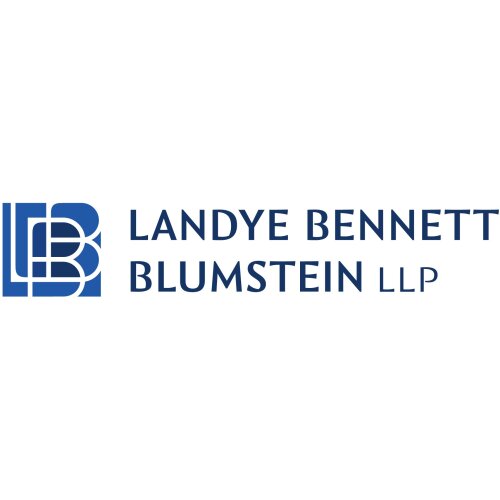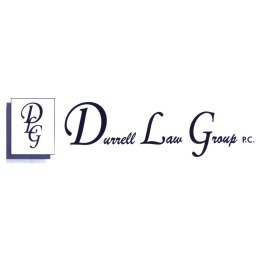Best Tax Increment Financing Lawyers in Alaska
Share your needs with us, get contacted by law firms.
Free. Takes 2 min.
Or refine your search by selecting a city:
List of the best lawyers in Alaska, United States
About Tax Increment Financing Law in Alaska, United States
Tax Increment Financing, commonly referred to as TIF, is an economic development tool used by local governments to stimulate private investment in designated areas. In Alaska, TIF allows municipalities to fund public infrastructure and improvements in a specific district by capturing the future increase in property tax revenues generated by those improvements. These funds are then reinvested within the TIF district to encourage further development or rehabilitate underused or declining areas. TIF is commonly used in urban renewal projects, commercial development, and public works to foster economic growth and community revitalization.
Why You May Need a Lawyer
Tax Increment Financing is a complex process involving intricate legal, financial, and regulatory frameworks. People or organizations may need legal assistance in several scenarios, including:
- Negotiating and drafting TIF agreements between private developers and municipalities
- Ensuring compliance with state and local laws and regulations governing TIF districts
- Challenging or defending a TIF designation or the use of TIF funds
- Assessing the impact of TIF on existing tax obligations for property owners and developers
- Guiding through public hearing or approval processes
- Addressing disputes between stakeholders, such as property owners, developers, or local governments
- Advising on the long-term fiscal impact and responsibilities associated with TIF projects
Engaging a knowledgeable attorney can help ensure your rights are protected and that your interests are represented throughout the TIF process.
Local Laws Overview
In Alaska, Tax Increment Financing is governed primarily at the municipal level, with enabling statutes set forth in Alaska state law. Here are key aspects of how TIF is regulated in Alaska:
- Municipalities must designate specific areas as TIF districts, often referred to as Tax Increment Development Districts
- Creation of a TIF district typically requires public notice, hearings, and adoption of a project plan by the municipal government
- The increase in property tax revenues (the increment) from rising property values within a TIF district is allocated for specified public improvements
- State law contains requirements for the use, duration, and oversight of TIF funds, including transparency and reporting provisions
- Alaska law ensures that certain procedural safeguards are in place to protect both the public interest and private sector stakeholders
- Some projects or improvements may require additional local or state regulatory approvals, especially when environmental or land use issues are involved
It is important to consult the local ordinances and Alaska Statutes for specific guidance on TIF implementation in your municipality.
Frequently Asked Questions
What is Tax Increment Financing?
Tax Increment Financing is a method by which a municipality can fund public improvements within a specified district by capturing the future increase in property taxes resulting from those improvements and reinvesting those funds within the district.
Who can establish a TIF district in Alaska?
TIF districts in Alaska are established by municipalities, city councils, or borough assemblies through a formal legislative process that includes public notice and hearings.
What types of projects can be funded with TIF in Alaska?
TIF funds are typically used for public infrastructure projects, such as roads, utilities, public buildings, and in some cases, support for private development that benefits the community.
Does TIF increase property taxes for current residents?
TIF does not increase the tax rate for current property owners. However, the increased property values that may result from development could lead to higher individual tax bills.
How long does a TIF district last?
The duration of a TIF district is determined by the municipality, often ranging from 15 to 30 years, or until sufficient funds have been generated to cover the approved project costs.
Are all property tax increases within a TIF district allocated to TIF projects?
No. Only the increment or the difference between the base property value at the time the district is established and the increased value over time is allocated to the TIF fund. The base value continues to generate typical tax revenues for the municipality.
Can TIF funds be used for private development?
TIF funds are primarily intended for public improvements, but some projects may include support for private development if it serves a public purpose and is consistent with the approved project plan.
What are the risks of entering into a TIF arrangement?
Risks include potential cost overruns, changes in projected property values, legal challenges, or shifts in public policy that may impact funding or project viability.
How are TIF projects approved in Alaska?
TIF projects require approval by the local governing body, which typically involves multiple steps such as feasibility studies, public notice, hearings, and formal adoption of a project plan.
Can a TIF district be challenged or changed after it is established?
Yes. Interested parties may have legal grounds to challenge a TIF district, and municipalities may amend or terminate TIF plans under certain conditions, often subject to legal and public notice requirements.
Additional Resources
For more detailed information or assistance, you may refer to the following resources:
- Alaska Department of Commerce, Community, and Economic Development
- Local city or borough planning and development departments
- Alaska Municipal League
- Alaska State Legislature statutes and resources on economic development
- American Planning Association - Alaska Chapter
- Local public libraries for records of TIF projects and ordinances
It may also help to seek guidance from local business associations or nonprofit organizations involved in community development.
Next Steps
If you are considering involvement with a Tax Increment Financing project in Alaska or believe your property or interests may be affected by one, consider these steps:
- Gather all relevant information on the proposed TIF district or project, including public notices, meeting minutes, and project plans
- Contact your local municipal or borough planning office for guidance on public participation opportunities
- Consult with a lawyer specializing in municipal finance, real estate, or land use law to understand your rights and responsibilities
- Prepare questions and concerns to address during public hearings or with municipal officials
- Review Alaska state statutes and relevant local ordinances regarding TIF to understand applicable laws
Legal advice is invaluable when navigating the complexities of Tax Increment Financing. Schedule a consultation with a qualified attorney who can assess your situation, explain your options, and help you move forward with confidence.
Lawzana helps you find the best lawyers and law firms in Alaska through a curated and pre-screened list of qualified legal professionals. Our platform offers rankings and detailed profiles of attorneys and law firms, allowing you to compare based on practice areas, including Tax Increment Financing, experience, and client feedback.
Each profile includes a description of the firm's areas of practice, client reviews, team members and partners, year of establishment, spoken languages, office locations, contact information, social media presence, and any published articles or resources. Most firms on our platform speak English and are experienced in both local and international legal matters.
Get a quote from top-rated law firms in Alaska, United States — quickly, securely, and without unnecessary hassle.
Disclaimer:
The information provided on this page is for general informational purposes only and does not constitute legal advice. While we strive to ensure the accuracy and relevance of the content, legal information may change over time, and interpretations of the law can vary. You should always consult with a qualified legal professional for advice specific to your situation.
We disclaim all liability for actions taken or not taken based on the content of this page. If you believe any information is incorrect or outdated, please contact us, and we will review and update it where appropriate.
Browse tax increment financing law firms by city in Alaska
Refine your search by selecting a city.
















